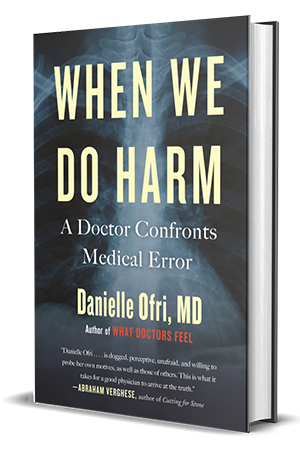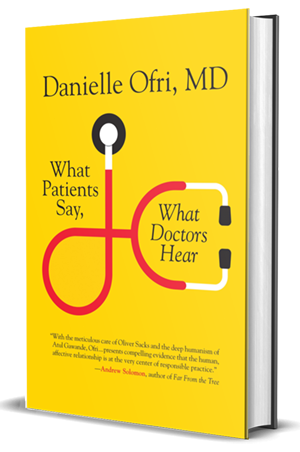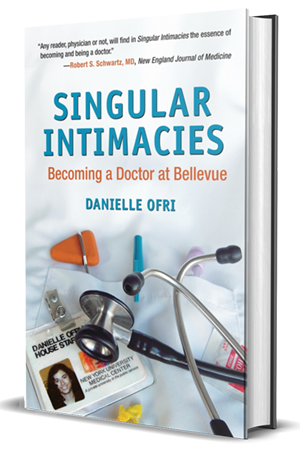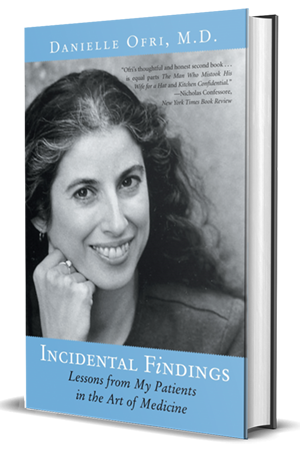When Doctors Feel Fear
I remember the first time I laid eyes on an actual amygdala, after slicing through a brain with a repurposed kitchen knife in neuroanatomyclass. That’s it? I thought. That nickel-size splotch tucked below the temporal lobes was the seat of my fears? It was monumentally underwhelming and even lacked
the poetic almond shape that its Latin name connotes.
More
New York Times review of “What Doctors Freel”
This book’s hallmark is honesty, particularly when it comes to the emotional fallout of her medical mistakes. More
Tolerating Ambiguity
When faced with ambiguous situations, most of us — quite humanly — want to run for the tantalizing veneer of the certain. We doctors pride ourselves in the scientific girders of modern medicine. Much of the time, though, we function in an ambiguous zone, without clear-cut answers. More
Medical Errors and the Culture of Shame
It was probably our eighth or ninth admission that day, but my intern and I had given up counting. I was midway through my medical residency, already a master of efficiency. You had to be, or you’d never keep up. This one was a classic eye-roller: a nursing home patient with dementia, sent to the emergency room for an altered mental status. When you were juggling patients with acute heart failure and rampant infections, it was hard to get worked up over a demented nonagenarian who was looking a little more demented. More
Creativity in Medicine
“What are you doing creatively these days?” It’s not a question you hear commonly. Medicine is a field with a strong history of creativity, but its daily practice feels less and less creative More
Incidental Finding?
A small adrenal mass was “incidentally noted” on my patient’s CT. But once the incidentaloma had been given life, so to speak, it was no longer incidental. We were now obliged to run some highly complicated — and expensive — lab tests. More
Medical Check-Ups: Waste of Time?
A new report concluded that general health checkups for adults did not help patients live longer or healthier lives. So is it time to scrap the annual medical check-up? More
Lab, Interrupted
All academic medical centers rest on a tripod — patient care, education and research. The effect of Hurricane Sandy on the third leg of that tripod — research — has gotten the least attention, partly because rescuing cell cultures just isn’t as dramatic as carrying an I.C.U. patient on a ventilator down flights of stairs in the dark. But, of course, there is an incontrovertible link between those cell cultures and that patient. More
Coming Home to Bellevue
There’s no place like home. That’s not a phrase people typically utter about their hospitals, but those were the words on everyone’s lips when we returned to Bellevue last week, after the hurricane-induced evacuation. More
When the Patient is “Noncompliant”
As soon as a patient is described as noncompliant, doctor shorthand for patients who don’t take their medication or follow medical recommendations, it’s as though a black mark is branded on the chart. More
Women Still Missing from Medicine’s Top Ranks
While women make up about half of all medical students and a third of academic faculty members, they are are still vastly underrepresented in leadership roles. Is it that the medical world remains biased against women? Or is it that the culture of the workplace — built around the needs of men for generations — simply remains that way? More
Imagine a World Without AIDS
The beginning of the end of AIDS? Could it really be?For those of us who did our medical training in the late ’80s and early ’90s, AIDS saturated our lives. The whole era had a medieval feel, with visceral suffering and human decimation all around. More
Falling into the Diagnostic Trap
It’s as though our brains close ranks around our first impression, then refuse to consider anything else. With this patient, we almost missed a life-threatening diagnosis. More
Assuming the Doctor’s a “He”
A classic study of preschoolers in 1979 showed that even young children “knew” that doctors were men and nurses were women. But surely we’ve moved beyond these stereotypes, no? More
Ins and Outs of Inpatient and Outpatient Medicine
The inpatient wards and the outpatient clinic are part of the same hospital, but they are like different planets. On the inpatient side, the patients are acutely ill — malignant brain tumor, acute renal failure, heart valve infections, intestinal bleeding, and so on. Not so in the outpatient clinic, where patients get their regular medical care to manage everyday chronic illnesses like diabetes, hypertension, obesity and heart disease. More








